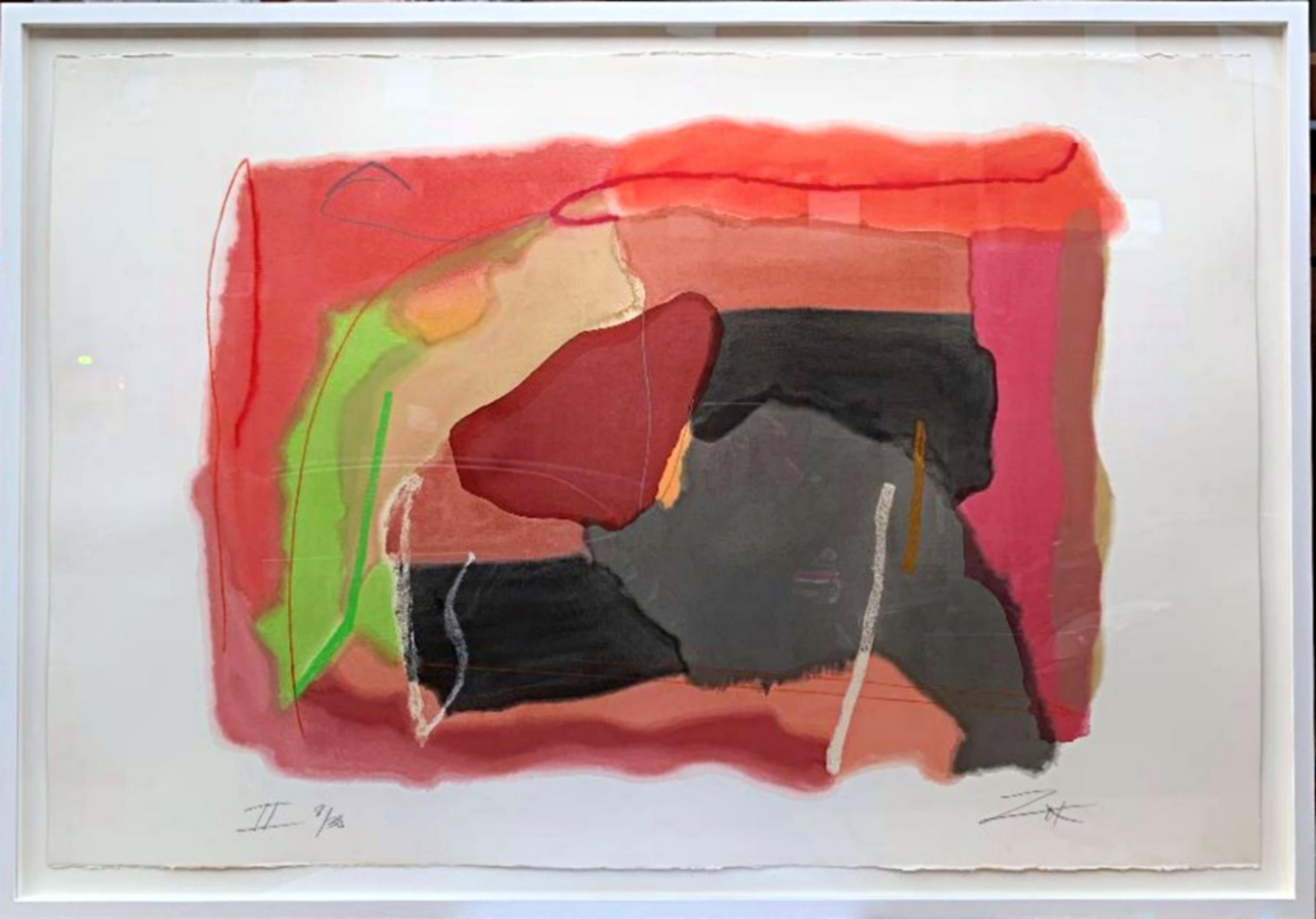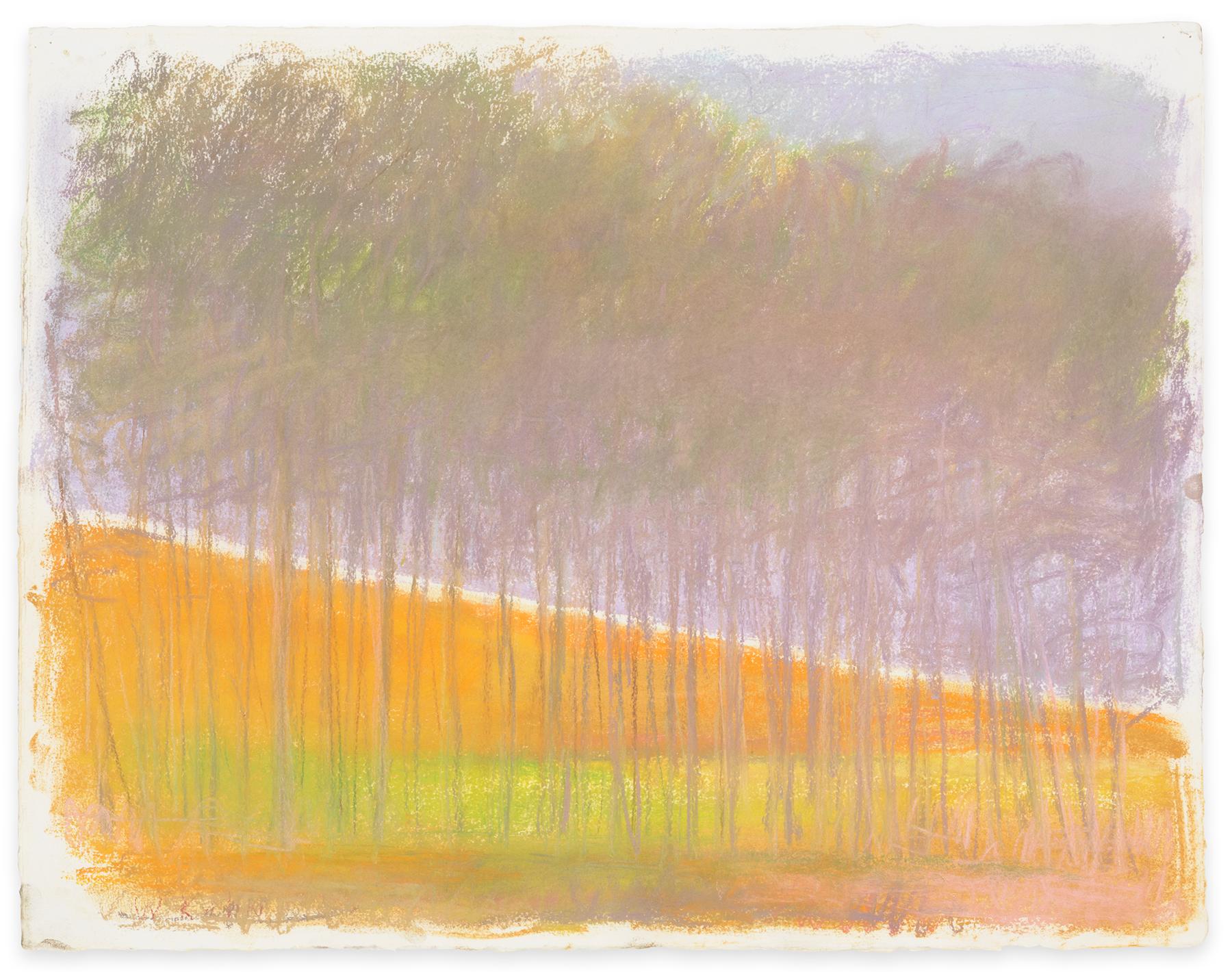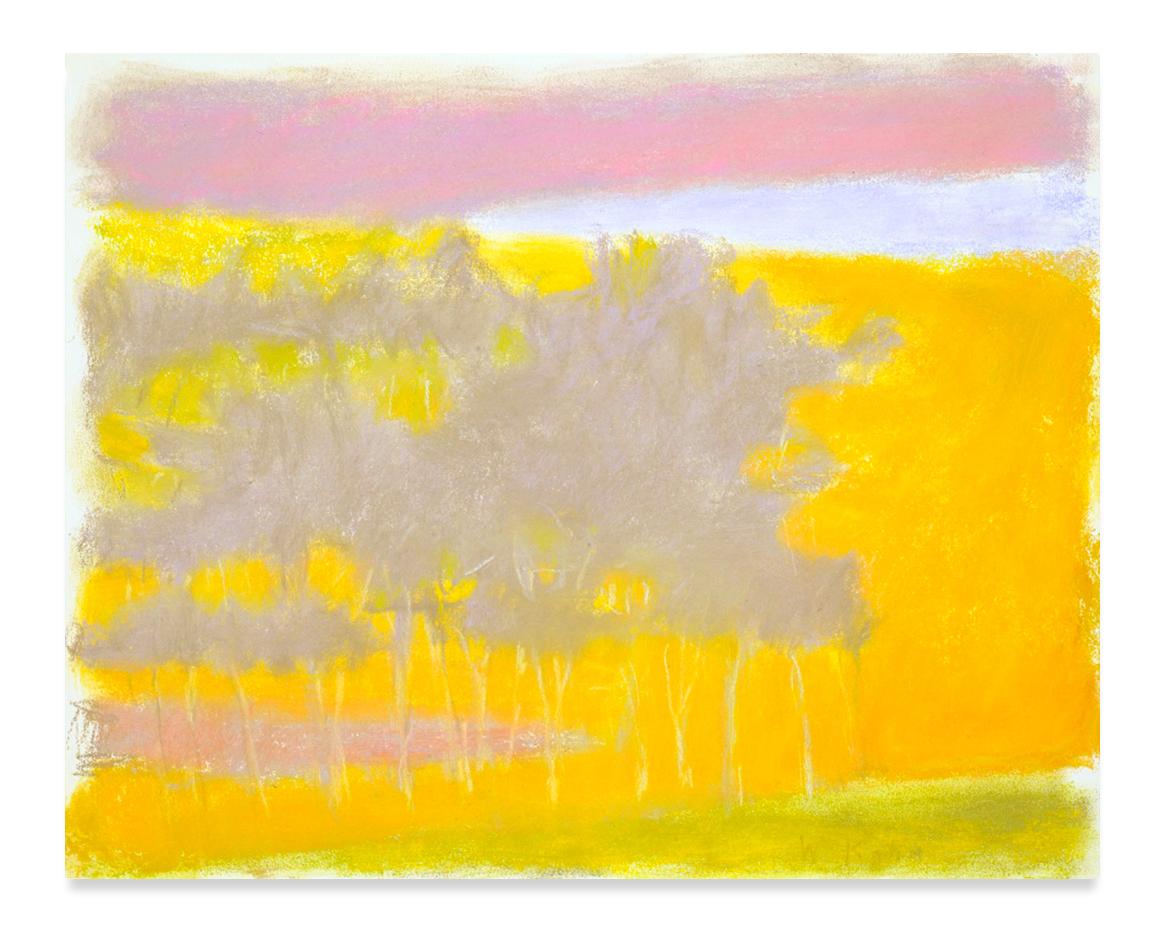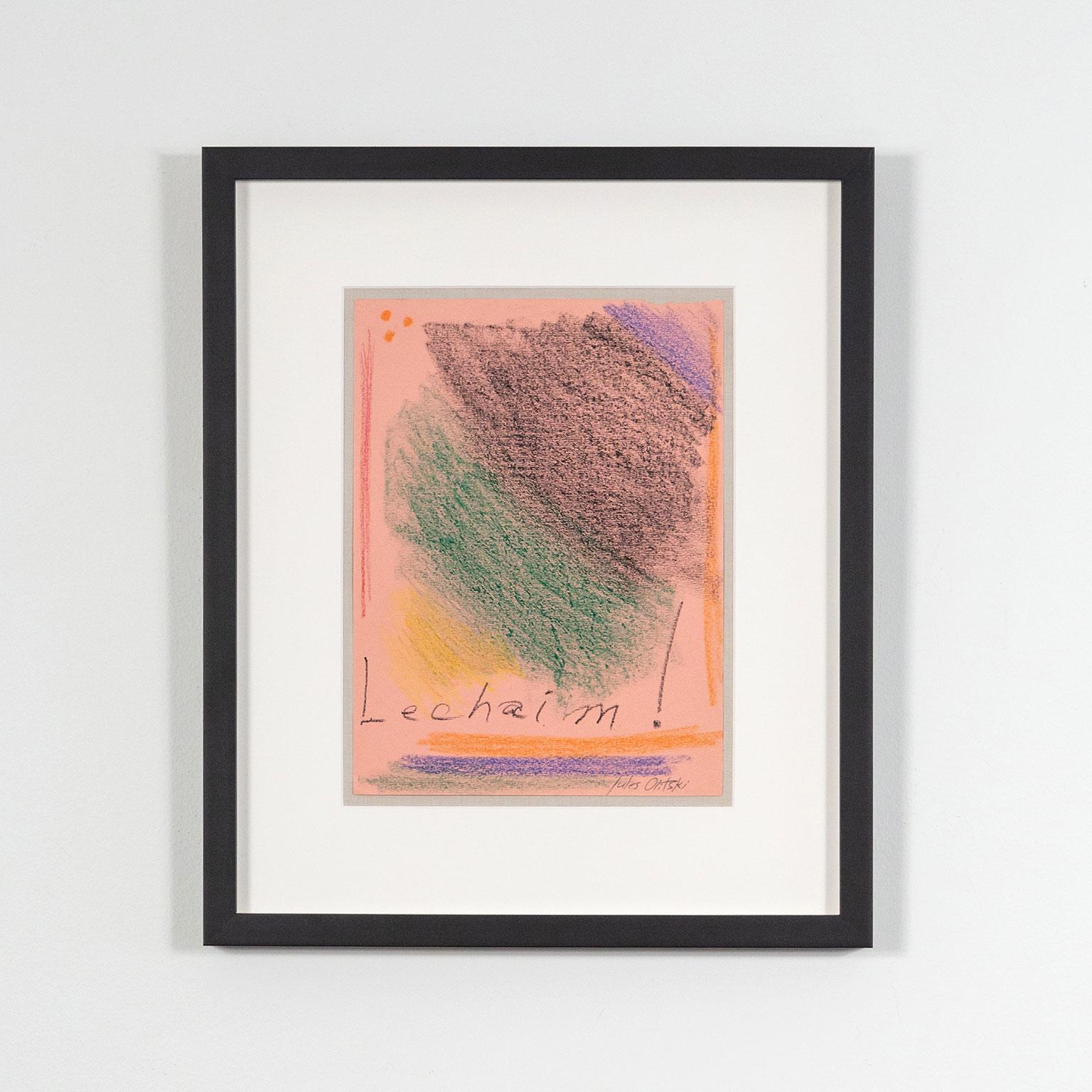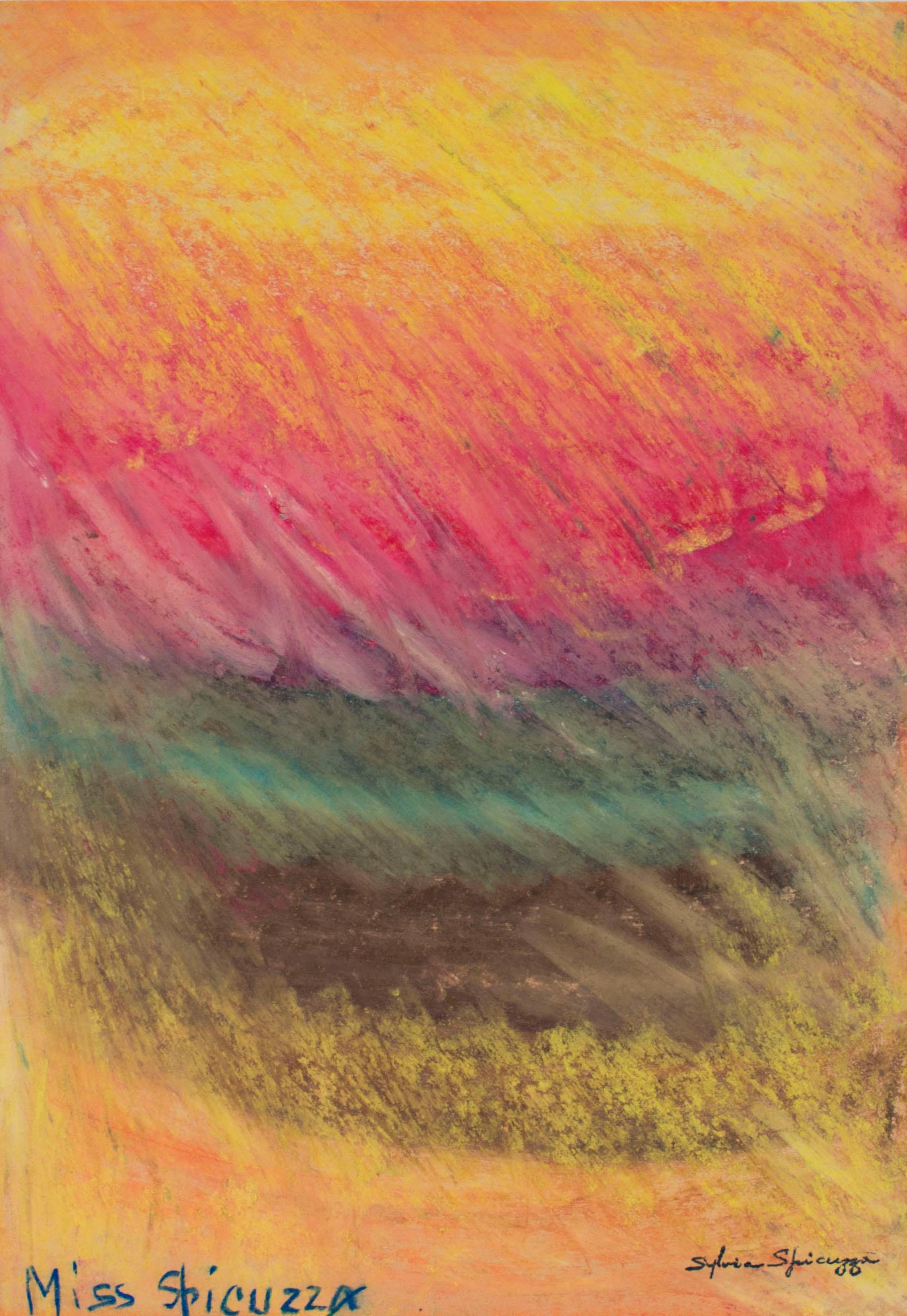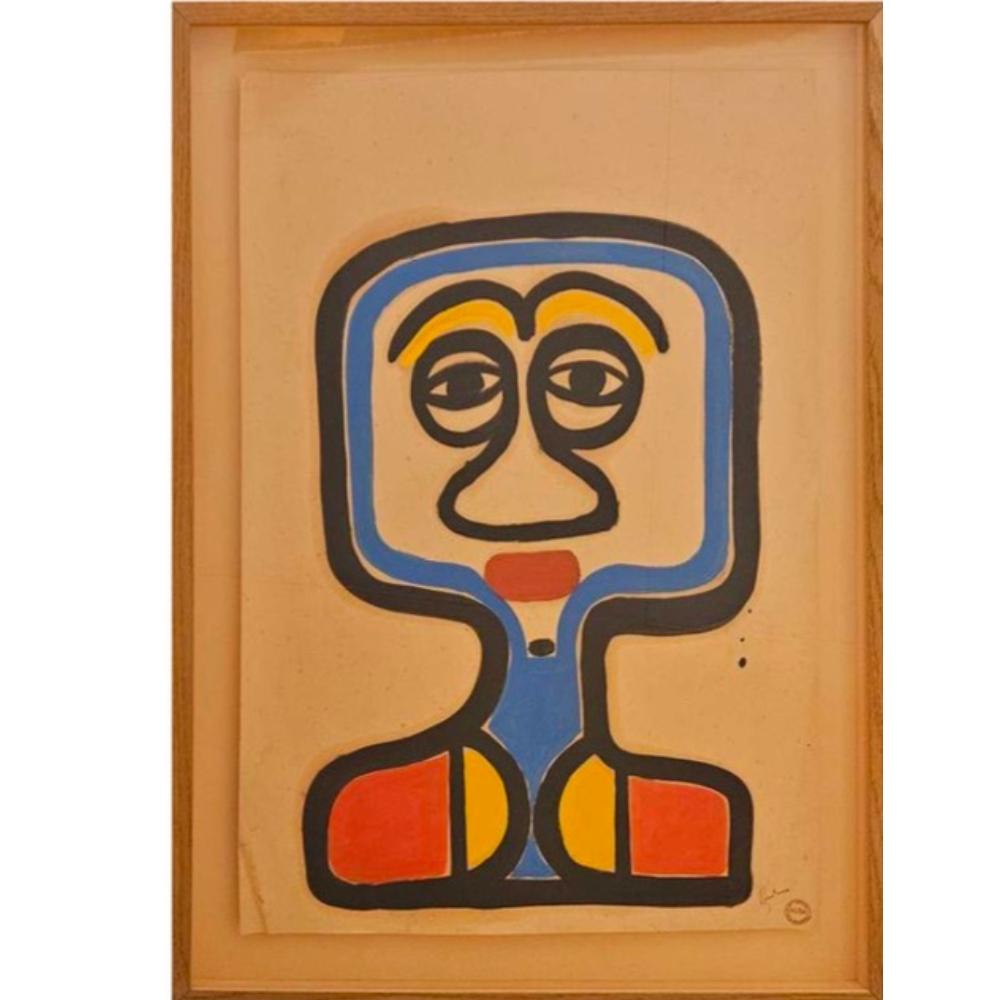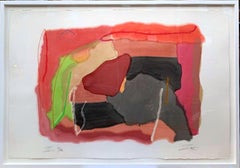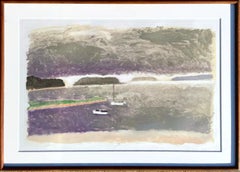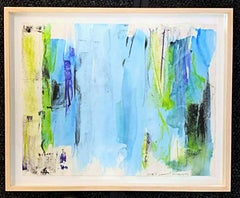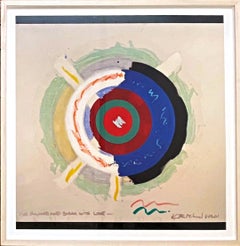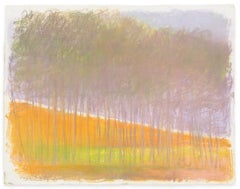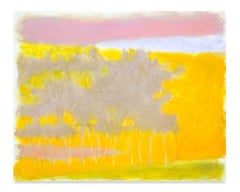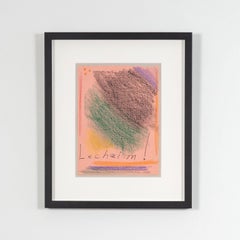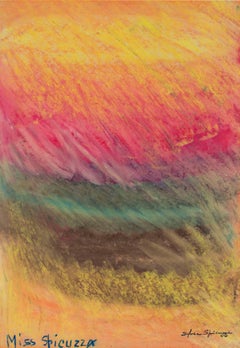Items Similar to Original signed pastel, Washington Color School & Color Field painter Paul Reed
Want more images or videos?
Request additional images or videos from the seller
1 of 9
Paul ReedOriginal signed pastel, Washington Color School & Color Field painter Paul Reed1982
1982
About the Item
Paul Allen Reed
Untitled #31, 1982
Oil pastel on paper
Pencil signed dated and annotated "7 10 79 1" by Paul Reed on the lower front
Frame included: This work is elegantly floated and framed in a white wood museum quality frame with UV plexiglass
Measurements:
Frame:
18 x 16 x 1.5 inches
Artwork:
11 x 9 inches
About Paul Reed:
Paul Reed was born in Washington, DC in 1919 and attended McKinley High School, where fellow artists Gene Davis and Howard Mehring were also once students. Reed moved to San Diego for college, but soon returned to DC to accept a job at The Times-Herald in 1937 working in the graphics department masking out half-tones in advertisements. At the same time, he took art courses at the Corcoran School of Art during the day. Graphic design jobs would then take Reed to Atlanta and New York before Reed established himself permanently in DC in 1952. Reed worked as a freelance graphic designer throughout the 1950s so he could have some flexibility in his schedule, regularly visiting museums and galleries with Gene Davis and painting in the mornings and evenings.
Paul Reed had his first solo exhibition at the Adams-Morgan Gallery in Washington, DC in January 1963. The stained canvases were characterized by a centralized image, often with a centrifugal motion within the jig-saw shapes. Reed had a solo exhibition at the East Hampton Gallery in New York in November of the same year. Many of the paintings exhibited in New York had a centrifugal force heightened by an accompanying small satellite painting that hung in close proximity to the main painting as if it had spun out from the central image. The suggestion of a diagonal orientation through a corner of canvas left untouched foretell the Disk paintings of 1965 where two colors corners set off a diagonal band in the center of the painting. 1964 brought solo exhibitions in DC at Jefferson Place Gallery in January and in New York at East Hampton Gallery in August. Further exhibitions were held in New York at East Hampton Gallery in 1966, the Bertha Schaefer Gallery in 1967 and 1971, and in DC at the Pyramid Gallery in 1971 and 1973.
From 1966 to 1971, Paul Reed systematically increased the complexity of his color relationships within the constraints of the canvas shape. Reed first experimented with overlapping stripes of color in his 1965 Upstart series. Intrigued by the secondary colors that resulted from the overlapping he explored the “plaid” effect of grids in the series Interchange, Inside Out, and Coherence of 1966. In 1967 Reed began to work in shaped canvases where he added an additional side to his canvas shape each time he felt he had exhausted the color possibilities with the previous form. With each new shape, Reed applied color lessons learned from the prior series then expanded on them. Looking at the series Emerging (four sides), Topeka (five sides), Hackensack (six sides), and Zig-Fields (seven sides) from 1967 one sees how Reed used increasingly complex forms to master intricate color challenges.
Recognition for Paul Reed as an early member of the Washington Color School came with his inclusion in Gerald Nordland’s exhibition Washington Color Painters at the Washington Gallery of Modern Art in 1965. The exhibition traveled across the country to the University of Texas Art Galleries, Austin, TX (now the Blanton Art Museum); Art Gallery, University of California, Santa Barbara, CA; Rose Art Galleries, Brandeis University, Waltham, MA; and the Walker Art Center, Minneapolis, MN. The following year Reed was included in The Hard-Edge Trend at the National Collection of the Fine Arts (now the Smithsonian American Art Museum).
Recently Paul Reed was included in the Corcoran Gallery of Art exhibition Washington Color and Light in 2011. The same year Reed had solo exhibitions at the Workhouse Art Center in Lorton, Virginia titled Ultraviolet to Infrared: Paul Reed-50 Years and at Georgetown University, Evolution Through Color: The Art of Paul Reed, which featured paintings, sculptures, studies, and prints. The Phillips Collection hung a gallery of the artist’s paintings in their collection as a memorial in 2015. The University of Maryland University College (UMUC) held an exhibition of Reed’s work in 2018. The Oklahoma City Museum of Art purchased the Washington Gallery of Modern Art’s entire collection in 1968. They have continued to acquire Reed’s work and now have a significant holding of his work across five decades. The OKCMOA is currently organizing an exhibition of Paul Reed’s work.
Paul Reed’s work is in dozens of museums across the country, including the National Gallery of Art, the Phillips Collection, the Corcoran Gallery of Art, the Hirshhorn Museum, and Sculpture Garden and the Smithsonian Museum of American Art, all in DC; the Museum of Fine Arts, Boston; the Art Institute of Chicago; the Detroit Institute of Art; the Walker Art Center, Minneapolis; the Dallas Museum of Art; Greenville County Museum of Art, South Carolina; the High Museum of Art, Atlanta; the Oklahoma City Museum of Art; the Phoenix Art Museum; the San Francisco Museum of Modern Art; and the Wadsworth Atheneum, Hartford.
- Creator:Paul Reed (1919, American)
- Creation Year:1982
- Dimensions:Height: 18 in (45.72 cm)Width: 16 in (40.64 cm)Depth: 1.5 in (3.81 cm)
- Medium:
- Movement & Style:
- Period:
- Condition:
- Gallery Location:New York, NY
- Reference Number:1stDibs: LU1745216212302
About the Seller
5.0
Platinum Seller
Premium sellers with a 4.7+ rating and 24-hour response times
Established in 2007
1stDibs seller since 2022
430 sales on 1stDibs
Typical response time: 2 hours
- ShippingRetrieving quote...Shipping from: New York, NY
- Return Policy
Authenticity Guarantee
In the unlikely event there’s an issue with an item’s authenticity, contact us within 1 year for a full refund. DetailsMoney-Back Guarantee
If your item is not as described, is damaged in transit, or does not arrive, contact us within 7 days for a full refund. Details24-Hour Cancellation
You have a 24-hour grace period in which to reconsider your purchase, with no questions asked.Vetted Professional Sellers
Our world-class sellers must adhere to strict standards for service and quality, maintaining the integrity of our listings.Price-Match Guarantee
If you find that a seller listed the same item for a lower price elsewhere, we’ll match it.Trusted Global Delivery
Our best-in-class carrier network provides specialized shipping options worldwide, including custom delivery.More From This Seller
View AllDexter's Choice, State II, signed mixed media watercolor (unique variant) Framed
By Larry Zox
Located in New York, NY
Larry Zox
Dexter's Choice, State II, ca. 1990
Mixed media, Watercolor pochoir, and Oil stick Wax, Water-Based Crayons, on heavy Arches museum watercolor rag paper with deckled edges
40 × 60 in
101.6 × 152.4 cm
Edition 8/30 (unique variant)
Frame included
Measurements:
Sheet: 40 inches (vertical) by 60 inches (horizontal)
Frame: 42 inches x 62 inches x 1 inch
Dexter's Choice, State # II is a unique, mixed media work from an edition of 30 unique variants done in pochoir, (25 stencils, 14 colors). Here, Zox uses watercolor instead of inks, which is applied to heavy 300 lb. watercolor paper. Although it is a multiple signed and numbered from the edition of 30, each work of art is unique because of how the paper receives the watercolor brush. In addition, this work is created like a mixed media painting because it has 11 lines added by hand with wax and water based crayons and oil sticks. The unique watercolor technique that Zox employed in making "Dexter's Choice" is documented in the textbook, "Screen Printing: Water Based Techniques,Roni Henning, NYIT ".
Dexter's Choice was published by Images Gallery, and this work was acquired directly from the publisher before they sold out. This work is elegantly floated and framed in a white wood frame.
Accompanied by gallery issued Certificate of Guarantee
Larry Zox Biography:
A PAINTER who played an essential role in the Color Field discourse of the 1960s and 1970s, Larry Zox is best known for his intensely and brilliantly colored geometric abstractions that question and violate symmetry.1 Zox stated in 1965: “Being contrary is the only way I can get at anything.” To Zox, this position was not necessarily arbitrary, but instead meant “responding to something in an examination of it [such as] using
a mechanical format with X number of possibilities.”2 What he sought was to “get at the specific character and quality of each painting in and for itself,” as James Monte stated in his introductory essay in the catalogue for Zox’s 1973–1974 solo exhibition at the Whitney Museum of American Art.3 Zox’s robust paintings reveal
a celebrated artist and master of composition who is explored and challenged the possibilities of Post-Painterly Abstraction and Minimalist pictorial conventions.
Zox began to receive attention in the 1960s when he was included in several groundbreaking exhibitions of Color Field and Minimalist art, including Shape and Structure (1965), organized by Henry Geldzahler and Frank Stella for Tibor de Nagy, New York, and Systemic Painting (1966), organized by Lawrence Alloway for the Solomon R. Guggenheim Museum, New York. In 1973–1974, the Whitney’s solo exhibition of Zox’s work gave recognition to his significance in the art scene of the preceding decade. In the following year, he was represented in the inaugural exhibition of the Hirshhorn Museum and Sculpture Garden, Wahsington, DC, which acquired fourteen of his works.
Zox was born in Des Moines, Iowa in 1937. He attended the University of Oklahoma and Drake University, Des Moines, Iowa, and then studied under George Grosz at the Des Moines Art Center. In 1958, Zox moved to New York, joining the downtown art scene. His studio on 20th Street became a gathering place for artists, jazz musicians, bikers, and boxers, and he occasionally sparred with visiting fighters. He later established a studio in East Hampton, a former black smithy used previously by Jackson Pollock.
In his earliest works, such as Banner (1962) Zox created
collages consisting of pieces of painted paper stapled onto sheets of plywood. He then produced paintings that were illusions of collages, including both torn- and trued-edged forms, to which he added a wide range of strong hues that created ambiguous surfaces. In paintings such as For Jean (1963), he omitted the collage aspect of his work and applied flat color areas to create more complete statements of pure color and shape. He then replaced these torn and expressive edges with clean and impersonal lines that would define his work for the next decade.
From 1962 to 1965, he produced his Rotation series, at first creating plywood and Plexiglas reliefs, which turned squares into dynamic polygons. He used these shapes in his paintings as well, employing white as a foil between colors to produce negative spaces that suggest that the colored shapes had only been cut out and laid down instead of painted. The New York Times in 1964 wrote of the works in show such as Rotation B (1964) and of the artist: “The artist is hip, cool, adventurous, not content to stay with the mere exercise of sensibility that one sees in smaller works.”4
In 1965, he began the Scissor Jack series, in which he arranged opposing triangular shapes with inverted Vs of bare canvas at their centers that threaten to split their compositions apart. In several works from this series, Zox was inspired by ancient Chinese water vessels. With a mathematical precision and a poetic license, Zox flattened the three dimensional object onto graph paper, and later translated his interpretation of the vessel’s lines onto canvas with masking tape, forming the structure of the painting.
The Diamond Cut and Diamond Drill paintings...
Category
1990s Color-Field Abstract Drawings and Watercolors
Materials
Crayon, Oil, Watercolor, Monoprint, Mixed Media, Graphite
Bay with Boats Color Monotype unique signed abstract color field landscape frame
By Wolf Kahn
Located in New York, NY
Wolf Kahn
Bay with Boats, 1987
Color monotype on Somerset white wove paper
Hand signed and dated by Wolf Kahn on the lower right front, bears labels on the back
Frame Included: matte...
Category
1980s Color-Field Landscape Prints
Materials
Lithograph, Monotype
Walter Darby Bannard, Ammersee #2 signed painting by renowned Color Field artist
By Walter Darby Bannard
Located in New York, NY
Walter Darby Bannard
Ammersee #2, 1975
Watercolor and acrylic painting on paper
Signed, titled and dated lower recto
This is a unique work
Frame included: elegantly floated and frame...
Category
1970s Color-Field Abstract Drawings and Watercolors
Materials
Ink, Mixed Media, Acrylic, Watercolor, Graphite
Target acrylic on paper geometric Color Field painting signed & inscribed Framed
By Kenneth Noland
Located in New York, NY
Kenneth Noland
Untitled Target, 2001
Acrylic paint on offset lithograph paper
Signed, dated, and dedicated along lower edge: For Howard and Susan with Love Kenneth Noland 6.10.01
Fra...
Category
1990s Color-Field Abstract Paintings
Materials
Acrylic, Permanent Marker, Lithograph, Offset
Monotype w/hand painting, geometric art famed color field painter, signed Framed
By Kenneth Noland
Located in New York, NY
Kenneth Noland
Untitled, 1987
Monotype with hand painting on wove paper
Hand signed and dated with artist's copyright in pencil on the back; also with the blind stamp/chop mark lower...
Category
1980s Color-Field Abstract Prints
Materials
Acrylic, Monotype, Screen
Larry Poons, Midget Racer, unique Color Field Abstract Geometric drawing, signed
By Larry Poons
Located in New York, NY
Larry Poons
Midget Racer, 1963
Colored Pencil on Graph Paper
Signed, titled, and dated by the artist on the lower right front
Original frame with gallery label included
Provenance: H...
Category
1960s Color-Field Abstract Drawings and Watercolors
Materials
Mixed Media, Color Pencil
You May Also Like
Rising Road Behind Trees
By Wolf Kahn
Located in New York, NY
WOLF KAHN
Rising Road Behind Trees, 2005
Pastel on paper
19 3/4 x 25 inches
50.2 x 63.5 cm
Signed: "W Kahn" (lower left recto)
Color-field landscape painting of trees against a brig...
Category
Early 2000s Color-Field Abstract Drawings and Watercolors
Materials
Pastel
Price Upon Request
Gray Foliage
By Wolf Kahn
Located in New York, NY
WOLF KAHN
Gray Foliage, 2007
Pastel on paper
19 x 25 inches
48.3 x 63.5 cm
Color-field landscape painting of trees against a light orange by Wolf Kahn.
--
Born in Stuttgart, Germ...
Category
Early 2000s Color-Field Abstract Drawings and Watercolors
Materials
Pastel
Price Upon Request
Lechaim!
By Jules Olitski
Located in Toronto, Ontario
Jules Olitski (1922-1977) is one of the most collected and accomplished artists associated with the color-field movement, if not 20th-century American abstraction.
Created in the m...
Category
1960s Color-Field Abstract Drawings and Watercolors
Materials
Pastel, Mixed Media
$10,200
"Color Field (Chalk on Wet Paper)" original pastel by Sylvia Spicuzza
By Sylvia Spicuzza
Located in Milwaukee, WI
In this composition, Sylvia Spiczza works in the manner of color field artists like Mark Rothko and Helen Frankenthaler, presenting a gradation of colors shifting from yellow to red ...
Category
1960s Color-Field Abstract Drawings and Watercolors
Materials
Pastel
Sans titre
By Albert Chubac
Located in PARIS, FR
Original piece,
Mixed media
signed
70 x 53 x 3 cm (framed)
Category
1960s Color-Field Abstract Drawings and Watercolors
Materials
Mixed Media
WOP 2 - 00669
By Hiro Yokose
Located in Phoenix, AZ
mixed media on paper; unframed
signed lower right
Neoromantic painter Hiro Yokose fuses multiple layers of wax and oil paint to create mysterious, veiled landscapes illuminated wi...
Category
2010s Color-Field Mixed Media
Materials
Paint, Paper, Mixed Media, Archival Paper
Recently Viewed
View AllMore Ways To Browse
1950s Painters
Washington Dc Painting
Washington Color School
Reeded Wood
Painter Walker
Vintage Lighted Santa
Framed Vintage Advertisements
Vintage Austin Sign
Barbara Allen
Howard Nowes
Vintage Austin Sculptures
1971 Original Oil On Canvas
Reed Oil Painting
Paul Allen
Vintage Satellite
Gene Gray
Georgetown Galleries
Barbara Wood Signed Print
